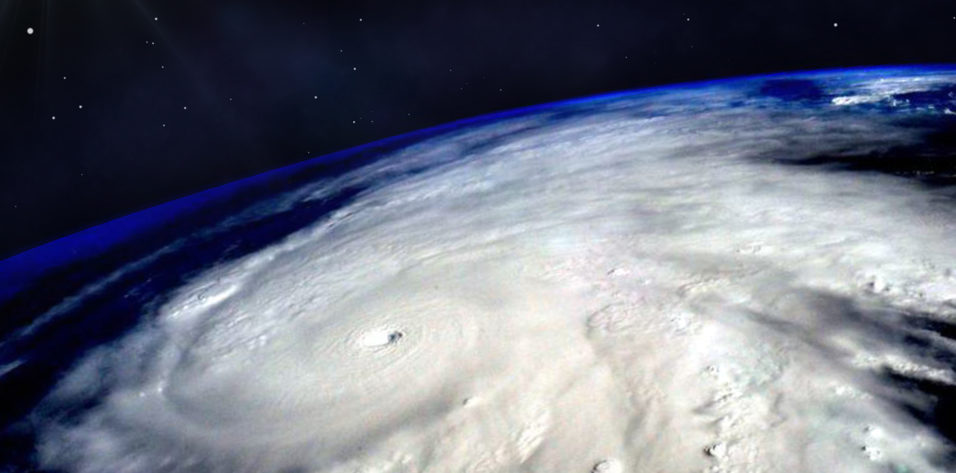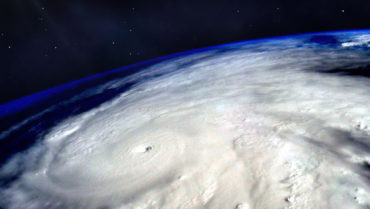
I have been in private practice in Miami for more than 40 years. Like other South Floridans, I have heard stories about the major hurricanes that struck our area—Miami in 1926, Fort Lauderdale in 1947, and the middle Florida Keys, the so-called Veterans Day Hurricane, with its 188-mph winds and 18-foot sea surge, in 1935. Our more typical experience, however, was that tropical hurricanes turned from our path or lost power before they reached the Miami area.
We had only short warning before Hurricane Andrew had a direct impact on us, with 177-mph winds, in August 1992. Within a small, tight area less than 8 miles south of our hospital, there was a 17-foot ocean surge. From Kendall, where Baptist Hospital is located, south to Homestead, the high winds and rain caused catastrophic damage. The storm laid waste to the area, flattening thousands of structures. Some 82,000 businesses were damaged or destroyed, more than 25,000 homes totaled, and more than 100,000 homes damaged in Dade County alone. Some 1.4 million homes lost electricity, and more than 150,000 lost telephone service. Although more than 1 million people were evacuated from Monroe (Upper Florida Keys), Dade, and Broward counties, tens of thousands remained behind in the storm’s direct path.
Getting notice that Andrew was heading directly toward us from the Bahamas, I got my son, William B. Trattler, MD, who at the time was an intern at Mt. Sinai Medical Center in Miami Beach, which had been evacuated, to come be with us and volunteer in our hospital.
TRIAGE AND MORE
With the hospital administrator out of town on vacation, I helped the assistant administrator organize the staff to prepare for the storm. We brought more than 200 pregnant women who were near term into the hospital. With the storm-related drop in barometric pressure, 16 babies were delivered during the hurricane.
We set up triage areas where we could separate relatively minor injuries needing suturing or care from major injuries. Teams of physicians, nurses, technicians, and volunteer lay people assisted in giving treatment. I sutured many patients with Andy, a plaintiff’s attorney I had coached in youth baseball, assisting me. We worked smoothly together.
My wife and daughter helped prepare thousands of sandwiches with the kitchen staff and then went on to assist in helping patients in the waiting rooms of the ER.
The hospital lost all running water during the storm and for the next week afterward, so only bottled water was used. None of the toilets worked, so special containers were set up for waste. To scrub in for the OR, we used sterile bottled water.
A FOGGY DAY
Because we quickly lost all electric service in the storm, the hospital switched to its emergency generators. Although there was a lot of fuel for the generators stored in underground tanks, the hospital engineers worried that we would use up the fuel before the electric service was restored. Therefore, they raised the air conditioning thermostats to 78°. This allowed humidity levels to elevate throughout the hospital.
In the ORs, where Bill and I were operating together for the first time, the ceramic tiled walls began to sweat. As he and I repaired a central corneal laceration, our microscope lenses continuously fogged up. One of the OR nurses had to wipe the lenses throughout the procedure. Happily, despite the fog, that patient obtained a 20/20 visual result. Bill would later go on to finish his ophthalmology residency and a corneal fellowship.
AN ALTERED LANDSCAPE
Most of us worked straight through for 48 hours, until relief staff took over. As we finally left the hospital, we could see the downed trees blocking many of the roads and the smashed, roofless houses and stores. There were no working traffic lights, and, indeed, things had changed so much in appearance that it was easy to get disoriented driving to our home just 6 miles away. Many of the streets no longer looked the same.
DAMAGE AT HOME
Our home is close to the shoreline along Biscayne Bay, and it sits at one of the highest elevations in Miami, 14 feet above sea level. We had no flooding; however, micro-tornado effects of Hurricane Andrew blew in our front doors and went through our house.
There was water in our sunken living room, and leaves plastered the walls up to 10 feet. Furniture was ruined, and the kitchen, dining room, family room, and one bedroom were trashed. Patio doors were blown out, even though every door and window had been shielded with aluminum shutters or plywood. I had not thought to cover our double front doors, which opened inward. After the storm, building codes would be changed, requiring that doors open only outward.
The tornado also took the roof and outer wall off our neighbor’s home across the street, and after it wreaked its havoc on our house it went diagonally west over our back patio and hit the next home, but it missed my back neighbor completely. A gigantic old tree sat across our roof, indenting it.
AND AT THE OFFICE
Our medical practice building withstood the storm nicely, with only minor roof damage. There were downed electric power lines in our parking lot, so we could not reopen our office for about a week. Luckily, the office was insured for lost revenue.
Most frustrating, we could not get local telephone service for more than 1 week. Somehow, however, we could make long distance calls. (Remember long-distance calls?) It was through long-distance intermediary communications that we were able to confirm that our medical staff was safe.
One of our employees had a close call. Her roof blew off as her house disappeared around her. She survived in a windowless bathroom, with only a mattress over her head and her two young children with her in a bathtub. They were left with only the clothes on their backs. We gave them some new clothes and some money to go stay with relatives outside Florida. She finally returned to work with us 6 months later.
GETTING BACK TO NORMAL
We moved out of Miami for the next month, until our electricity was restored. I wanted to be available for our patients, so we commuted daily from Boca Raton, a 3-hour drive each way in heavy traffic.
Finally, our electricity was restored and with the bedroom wing of our home still intact and its central air conditioning working, we moved back into our house. My wife oversaw the reconstruction of our home, a slow process as few skilled workmen were available. Most of them had moved out because they lived in an area of Dade County that was devastated by the hurricane.
All in all, some 24,000 people moved north to Broward County. Tens of thousands of people moved out of Miami, going upstate or leaving Miami permanently. At our hospital, 81 employees immediately resigned and moved out. More than 1,500 homes of hospital employees were damaged or destroyed.
During this catastrophic storm we all came together, and afterward we were all joyful that we had survived. The experience, challenging though it was, made us better prepared to handle future storms.




